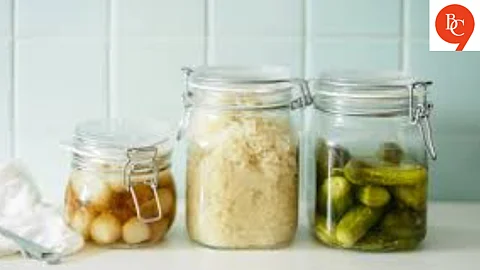

Social media is filled with aesthetic jars of bubbling concoctions and people swearing by their gut-healing powers. But what exactly are fermented foods, and is making them at home really worth the effort?
Let’s dive into the science, benefits, and reality of DIY fermentation—and whether the trend lives up to the hype.
What Are Fermented Foods?
Fermentation is a natural process in which microorganisms like bacteria and yeast break down sugars and starches into acids or alcohol. This not only preserves the food but also enhances its flavor, texture, and nutritional value.
Common fermented foods include:
Yogurt
Kombucha
Kimchi
Sauerkraut
Miso
Tempeh
Fermented pickles
Idli/Dosa batter (yes, Indian cuisine has its fermented roots too!)
Health Benefits of Fermented Foods
1. Improved Gut Health
Fermented foods contain probiotics, the “good” bacteria that support your digestive system and help maintain a healthy gut microbiome.
2. Boosted Immunity
A healthy gut is directly linked to better immune function. Regular consumption of fermented foods may help your body fight infections more effectively.
3. Enhanced Nutrient Absorption
Fermentation can increase the bioavailability of certain nutrients like B vitamins, magnesium, and zinc.
4. Digestive Aid
The acids produced during fermentation can ease digestion, especially in foods like dairy and legumes, which are otherwise harder to break down.
5. Mental Well-being
The gut-brain axis is real. A healthy gut can positively impact your mood, anxiety levels, and even sleep quality.
Why Make Fermented Foods at Home?
Store-bought fermented foods often come pasteurized (which kills probiotics), loaded with sugars, preservatives, or lack the diversity of beneficial bacteria. When you make them at home, you get:
Live probiotics in higher quantities
Control over ingredients and flavor
Cost savings over time
Satisfaction of making your own functional food
Easy DIY Fermented Foods to Try
1. Yogurt
All you need is milk and a spoonful of live-culture yogurt. Heat, cool, mix, incubate overnight—and done!
2. Kombucha
A fizzy, fermented tea made using a SCOBY (symbiotic culture of bacteria and yeast). It requires black/green tea, sugar, and time—lots of it (7–10 days).
3. Sauerkraut
Just shredded cabbage + salt. Massage, pack in a jar, leave to ferment at room temp for a week, and it turns tangy, crunchy, and probiotic-rich.
4. Fermented Pickles
Unlike vinegar pickles, these are made using a saltwater brine and left to ferment naturally, resulting in that classic sour, fizzy flavor.
5. Idli/Dosa Batter
A staple in Indian households—soak rice and urad dal, grind into a batter, and leave it to ferment overnight. Adds natural fluff and flavor.
Are They Worth the Hype?
Yes—and no. Fermented foods offer genuine health benefits backed by science, and making them at home can be empowering and economical. But they’re not magic pills. To truly feel the benefits, they need to be a consistent part of a balanced diet—not just a trend you try for a week.
That said, the hype around fermentation has encouraged people to reconnect with slow, intentional food-making, which is a win in itself.
DIY fermented foods are more than just a wellness trend—they’re part of an ancient tradition with proven health benefits. Whether you're brewing kombucha or making probiotic pickles, fermenting at home gives you control over what goes into your body.
